If you’ve had a chance to read my review on the IKEA Bekant standing desk, you’re familiar with some of the problems I encountered during that process. If not, we will be addressing the problems I had, as well as other common problems with the Bekant desk in this post.
The IKEA Bekant does come with some advantages; a ten year all inclusive warranty and the ability to test it before you buy at IKEA locations gives it an edge over many competitors. However, the list of problems that plague this product make it more of a hassle than it’s probably worth. Numerous threads exist online complaining of electronics failures, long warranty claims and bad wobble. All of these issues are likely deal breakers, and with my personal experience with the Bekant, I would have a hard time recommending it.
Full Disclaimer: We are an office furniture dealer and sell some of the adjustable sit stand desks we review. To learn more about the products we sell, our review process and why you can trust us, please visit: Why we’re different. Who is BTOD.com and The Breakroom Blog?
Top 7 Problems With IKEA Bekant
- Electronic Failures
- Standing Desk Stability Issues
- Warranty Replacements
- Desk Speed + Weight Capacity
- Too Much Friction In Columns
- Basic Electronic Technology
- Expensive To Order Online
1. IKEA Bekant Electronic Failures
While it was a toss up for me on what to put number one, the electronics failure edged out stability because of one reason. With an electronics failure, you simply cannot use the desk as it’s intended to be used. Do a quick search for the IKEA online and you’ll find numerous threads of users complaining about their desk not functioning. What first started out as an easy replacement of cables, soon turned into a complete recall of products that were on the shelves at IKEA. The electronic failures have been an issue since the product launched in 2014.
When I received my IKEA Bekant I was only able to get one full cycle up and down. After that point the left leg stopped moving at the same rate as the right leg. This created an uneven desk surface as soon as the desk was adjusted upward. The IKEA Bekant comes with a wide 26” range of adjustment, with the lowest setting being at 22”. Unfortunately, 22” was the only height where the desk would be level. That desk height is only suitable for users that are under five feet tall, which left the desk completely useless while it didn’t function properly.
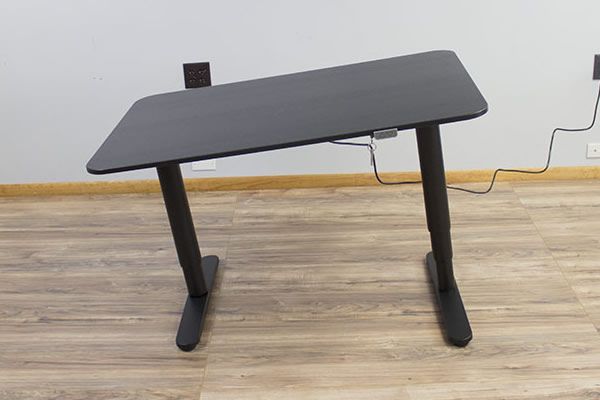
2. IKEA Standing Desk Stability Issues
Stability was very close to being my first choice for my IKEA Bekant problems post. It was the first desk I have tested that had stability issues at the absolute bottom position. This is something that should never happen. Unfortunately, for the IKEA Bekant it only got worse the higher you adjusted the desk. A second test I performed for stability included a 50 lbs. dumbbell. Once the desk rose beyond 33” to 34” the wobble and rocking motions became annoying. Anything that went above 39” high was bad and would significantly impact your productivity.
The second issue with the stability of the desk came from the connection of the base to the desktop. In typical IKEA fashion, they had created a very simple connection method. While the cheap fasteners made for quick assembly time, the top and base were never completely secure. You could actually slide the top around a bit because of the play left with the plastic fasteners. This was not a good enough connection for me to feel comfortable loading up the desk with heavy equipment. In fact, I would recommend staying below the max weight capacity of 154 lbs.
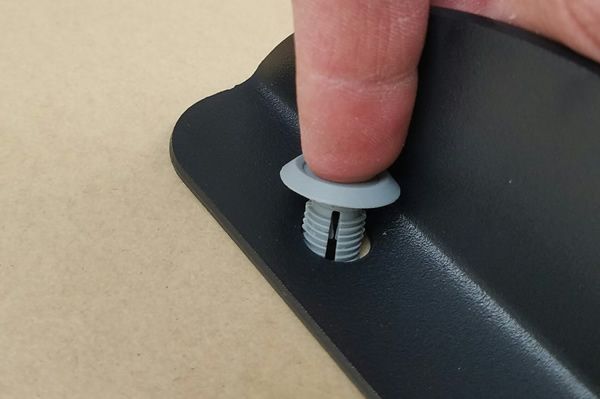
A Closer Look at Why the Stability was so Poor
I recently pulled the IKEA Bekant standing desk frame apart to get a better understanding of why it was so unstable. The round columns and lack of a cross support were partly at fault, but there had to be more to it. Upon further inspection, I had found the culprit inside the columns themselves. So many of the frames that I have tested have had issues with their glide systems. These are designed to provide a proper fit between the columns and also act as a way for the steel columns to slide smoothly while in motion. Typically glides are found at the top of the outer column, and the bottom of the inner column. They are designed this way to counteract each other and reduce the play between each column.
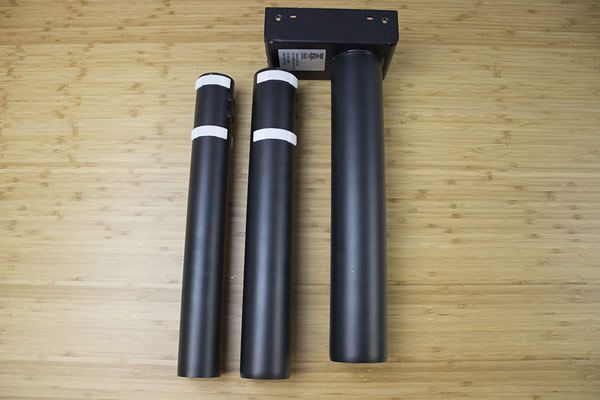

The IKEA Bekant’s design is different, with two glides found within a few inches of each other at the top of the inner columns only. This means that the bottom of the column has nothing in place to fill the gap between columns. Because of this design and the fact they use round columns, there is literally nothing in place to stop them from wobbling and rocking in the lowest position.
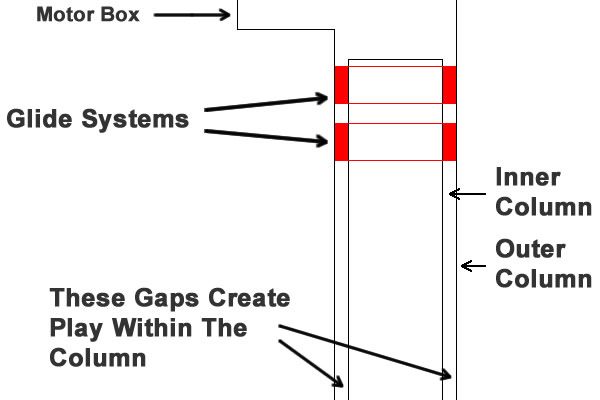
There is only one reason why manufacturers use this setup. As the desk columns move, natural rubbing of the glides occurs on the inner column, over time this will eventually create wear marks on the inner column. By designing it the way that IKEA has, you will never see where the glide has rubbed, meaning there will never be wear marks. Unfortunately, the trade off isn’t worth it in my opinion, as you’ll be left with a wobbly table.
3. IKEA Warranty Replacements
The warranty replacement policy for online orders is terrible. On 4/25/17 the process started with me filling out a form online, then waiting two days to receive a response. Because one leg wasn’t working I asked if I could receive a single leg to replace the defective one. On 4/29/17 I agreed to the IKEA reps suggestion of requesting a completely new base. I was told that someone would be in contact within two to three business days to confirm that my evidence was sufficient to send the new base. After four days I hadn’t received a response so I reached out again. After 30 minutes on hold they were able to find the my order with the claim number IKEA had previously provided. I was granted the full replacement and told it would take 7-10 days to ship. What?! The lady was nice enough on the phone to understand my dilemma and said she’d try to speed it up.
On 5/9/17 I followed up again. I was told my warranty replacement was getting close to ship. It wasn’t until the next day it finally shipped and arrived to our office on 5/12/17. This process from start to finish took 13 business days. With weekends included this took over half the month to receive the replacements to get my desk functioning.
We’ve been in business for twelve years next month. During the span of time there have been plenty of furniture emergencies. Of all the times customers that have called with one, the most pressing have always been a standing desk that isn’t functioning. When your desk is crooked, too low or too high, it’s impossible to work on. While we don’t do next day warranty replacements at BTOD.com, they always go out the same day or next day (worse case scenario). If you ordered an IKEA desk online and have no way to access the store’s inventory this could be a massive headache. Many of our customers receiving their new desk get rid of the old one. This means the non functioning desk is your only option.
4. Bekant Desk Speed + Weight Capacity
The IKEA Bekant is the only desk that I have tested with a weight capacity under 160 lbs. With a listed weight capacity of 154 lbs., I was eager to test it with additional weight. The Bekant comes standard with two motors, which should be plenty of power to lift more than this. During my tests I found that it’s motors were very inconsistent. Going up, the desk had no problem lifting over 200 lbs. with the top included. Going down with the max capacity of 154 lbs., the speed dropped to as low as .33” per second. At that rate, the time to get back to sitting height was painfully slow. If you have plans to add more than 130 lbs. of gear on your desk (plus the weight of the top), I would consider a different product. Of the eight other desks I tested under $800, none held this little weight or moved as slow.

5. The Bekant Has Too Much Friction In Columns
We have had the IKEA Bekant in our office for about three months now. As mentioned earlier in this post, I recently decided to pull the columns apart to learn more about what was inside. I have talked at great length about quality of components like glide systems, gears and electronics. The IKEA Bekant frame is heavy, really heavy. When I started to pull it apart I could tell they put a lot of effort into the construction of the columns. Inside there were plenty of welds, thick steel and a very tight fit with their glide system.
While the glides they use will provide some self lubrication, there wasn’t any additional dry or wet lubricant inside the columns. It was just raw steel that was cleaned by someone in production. You could feel how difficult it was to move the columns up and down. With the added friction, it appeared the reason for the motor failure was solved. Because it requires so much effort to move the columns up and down through the raw steel, the Bosch motors are likely burning out.
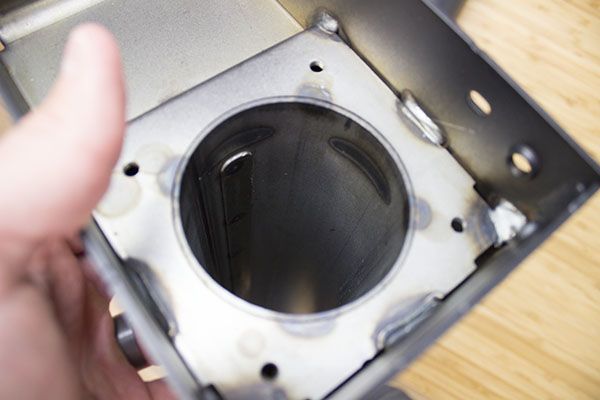
6. Bekant Has Very Basic Electronic Technology
The Ikea Bekant doesn’t come with the traditional control box found on other electric standing desks in the mid-range category. Control boxes will act like the CPU of the system. They control min/max height ranges, anti-collision, overload protection and programmable height options. The IKEA Bekant has small boards/chips that are attached to each motor that act as the control box. After testing functions like overload protection, I am less than impressed with their technology. This is a very simple system designed to keep their costs down.

7. The IKEA Bekant Is Expensive To Order Online
The IKEA Bekant that I ordered, a 47.25” x 31.5” size option, is now available in store for $399 + your local tax rate. When you order online, there is a shipping charge of $199.00. The fee makes the entire desk cost over $600 with tax included. At this price, all of the other desks I had tested were less expensive for a similar size. If you order this online, the IKEA Bekant goes from a decent value, to the worst value in the mid-range electric standing desk category. After testing this desk for three months I would say it ranks at the bottom and isn’t worth the $500 price tag at the store either.
Bottom Line
If you’ve read my other posts, you know that I’m fair with all of the products I test. I can typically find a few aspects of any product that would be a benefit. I had a hard time doing that with the IKEA Bekant product line. Outside of their stores proximity to customers, the IKEA Bekant has more problems than it does benefits. Sure, if you live close to the IKEA store you can get a sense if you like the product. If you decide to pull one from their stock, I would plan on going back to the store to get a replacement. At some point the faulty electronics are likely to stop working. Through the various threads online and my own personal experience, that could happen as soon as the second full adjustment or one month down the road. The IKEA Bekant is the least stable standing desk i’ve tested and second place is not even close. If you have $500 or more to spend on an electric standing desk, I suggest you look elsewhere.
Additional Standing Desk Converter Resources







Stephen Quail
If you have a Bekant and want more functions, height memories, google “Tindie Megadesk” its a straight replacement circuit board.
Daniel
I have this desk and the wobbling is annoying, do you have any suggestions on how to improve it? Thanks
The Rev'd Roan Pettifog
Loosen and turn the legs outward slightly.
So if they normally look like this (from overhead) | – |
make them look like this: / – \
Guillaume
I totally agree with you. Bought it few years ago when the early realiability problems were mostly resolved and there was a rebate (15% off?) and also because I could buy a L shape stand to fit my old ikea L shaped tabletop that I prefer over the newer ones.
I regret my purchase. All the problems you listed are true. For me, the two main ones are the lack of preset positions followed by the wobble.
I don’t recommand it when peoples ask me me advices.